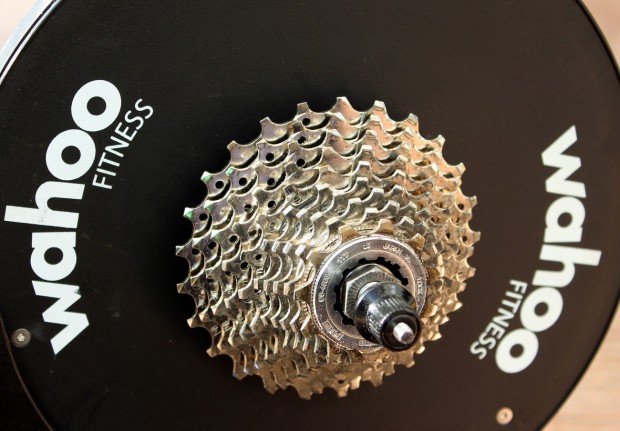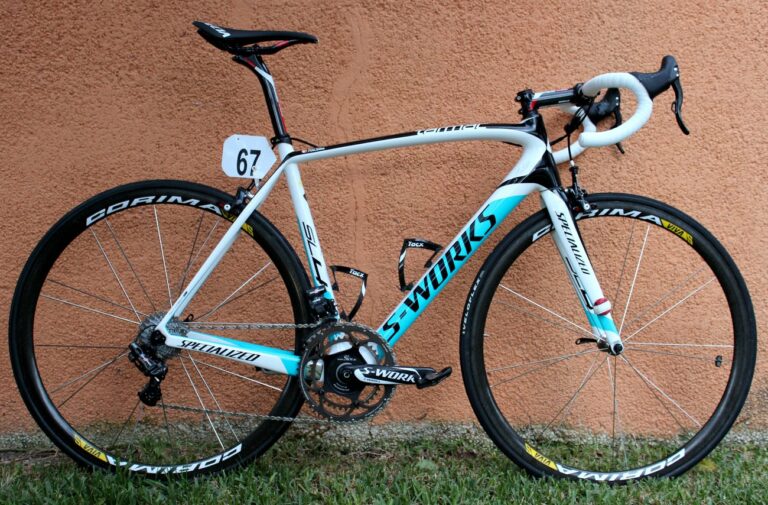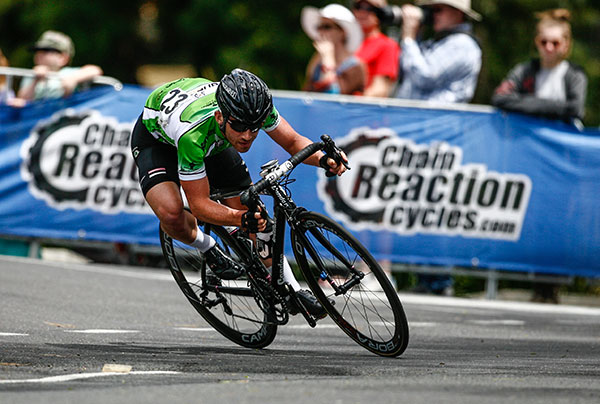If you see a Team Sky rider warming up or cooling down on a turbo trainer this season then they will be doing it on a Wahoo Kickr – and we’ve just received one to review.
Wahoo is the new kid on the block as far as turbo trainers are concerned and, like Team Sky’s new power meter supplier, Stages, they have announced their arrival by signing up as a supplier to the British WorldTour outfit.

The Wahoo Kickr Power Trainer, to give it its full name, is a Bluetooth Smart/ANT+ controlled, electromagnetic, direct drive turbo with a built-in power meter, and which can be used with open source third-party software, as well as Wahoo’s two apps.
We’ve heaved the Kickr from its box – we mean that literally as it’s very heavy at approximately 21kg – and have had a quick flick through the features to see what’s in store for our review.
Direct drive
The Kickr is a direct drive unit, so, like the Le Mond Revolution, you are required to remove your bike’s back wheel before hooking your chain up to the Kickr’s flywheel via the pre-installed cassette.
Wahoo supply the Kickr with a ten-speed Shimano compatible (also compatible with SRAM drivetrains), but nine/11-speed Shimano/SRAM users will have to buy a separate cassette (or use an old one) and swap it, as will Campagnolo fans.
Wahoo say that the Kickr’s electromagnetic resistance and wheel-off design provides a smooth, consistent road-like feel and also saves wear and tear on your bike’s rear tyre.

The Kickr has legs which fold out to give a wide stance and that, combined with the unit’s considerable heft, should provide a solid base for putting the power down. The height of the Kickr is also adjustable for a number of wheel dimensions from 24″ to 29″, though road riders will only need to keep it on the 700c option. The adjustable height means no front wheel riser block is needed.
iPhone-controlled
The Kickr’s Bluetooth Smart and ANT+ connectivity and the associated software is at its heart. The fact that it has both means it is compatible with Bluetooth Smart-enabled devices (for example the iPhone 4S, 5 and 5S, iPad 3, 4 and Mini) and ANT+ devices (like a PC with an ANT+ dongle). Wahoo are calling the Kickr the first iPhone-controlled indoor trainer and we’ll be using it with an iPhone 4S.
While it’s an open source platform (which we’ll come on to), the Wahoo Fitness app (currently only available through Apple’s iTunes store and not on the Android platform, though Wahoo are currently working on that) is designed specifically for the Kickr.

Four power modes
The Kickr is an electromagnetic turbo trainer so, unlike a trainer which uses air or fluid to create resistance, it requires a power source and so has to be used relatively close to a plug. It has a built-in power meter, with four settings – Level, Resistance, Erg and Sim – related to power output. We can immediately see why Team Sky were interested.
The first two modes are fairly simple and are similar to what you’d expect to see on a number of indoor trainers. Level mode offers nine levels of resistance, while Resistance mode offers a customisable level of resistance from zero per cent to 100 per cent. Remember, all this is controlled through your iPhone/iPad/laptop screen.
Erg mode is where it gets interesting and allows you to specify an exact wattage and the unit holds you to it, regardless of your cadence. Up the number of revs and it will reduce the resistance, slow your cadence down to a crawl and you’ll be creating some serious torque. This setting is likely to be music to the ears of cyclists who ride to a strict power-based training programme, particularly if intervals are your thing.
Sim (simulation) mode allows you to simulate the conditions of an outdoor ride according gradient, wind speed and rolling resistance. Interesting or over complicating the fundementals of a turbo (which is normally to make yourself hurt)? We’ll give it a go, along with all the settings, through the course of our test.
Once you’ve finished your workout Wahoo say you can upload it directly, via the Fitness app, to a number of third party websites, including Strava and Garmin Connect – useful if, like many riders, you use either as an online training log.

Open source software
The Fitness app isn’t Wahoo’s only software for the Kickr. There’s also the Wahoo Segments app (£20.99), which allows the user to ride courses and routes from Strava, with the resistance automatically changed according to the elevation profile. We’ll also be using the Wahoo Segments app in the weeks ahead.
While Wahoo has its own Fitness and Segments apps for the Kickr, the company’s open source ethos is perhaps what really sets it out from the crowd on the software front. There’s a wide number of apps available, including Kinomap for virtual course riding, structured training programme software Trainer Road, iMobile Intervals and BKOOL for real video, multiplayer sessions and social sharing.
Is this the future of indoor training? Wahoo think so and while we’re unlikely to scream ‘wahoo’ during any interval session, regardless of the turbo trainer, we’re looking forward to finding out.
Price: £949
Website: Wahoo Fitness





